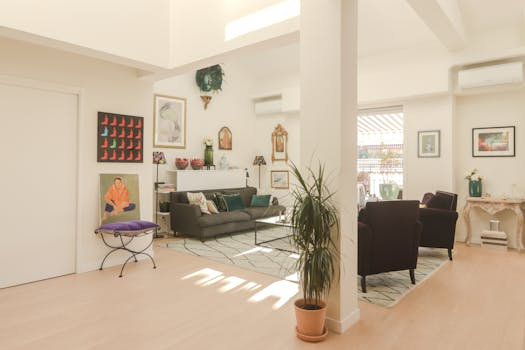Augmented Reality for Home Staging and Design
Home staging and design have always been essential elements of buying and selling a house. The traditional method of physically staging a home for potential buyers can be costly and time-consuming, leading to delays in the sales process. However, with recent advancements in technology, a new and innovative method of home staging and design has emerged – Augmented Reality (AR). AR has taken the real estate world by storm, proving to be an effective and efficient tool for both home sellers and buyers. In this article, we will delve deeper into the use of Augmented Reality for home staging and design and its impact on the real estate industry.
What is Augmented Reality?
In simple terms, Augmented Reality is a technology that superimposes digital content onto the real world through a device, such as a smartphone or tablet. This creates an enhanced version of reality, allowing users to see virtual elements as if they are a part of the physical environment. AR technology has gained popularity over the years, with its applications spanning across various industries.
The Benefits of AR for Home Staging and Design
Traditionally, home staging and design involved physically furnishing a house to make it more appealing to potential buyers. Although this method has proven to be effective, it is not without its limitations. The cost of physically staging a home can be exorbitant, especially for homeowners looking to sell their properties on a tight budget. The process can also be time-consuming, causing delays in the sales process.
With Augmented Reality, home staging and design have become more accessible and cost-effective. AR technology allows homeowners to virtually stage their homes, eliminating the need for physical furnishings. This not only saves time and money but also allows for a more versatile and customizable staging process.
Realistic Visualization
One of the main benefits of AR for home staging and design is the ability to provide a realistic visualization of a property. With AR, potential buyers can see how a home will look with different furnishings and designs. This makes it easier for them to envision themselves living in the space and can significantly impact their decision to purchase the property.
Wider Reach
Another advantage of AR in home staging and design is the ability to reach a wider audience. Virtual home staging is not limited by location and can be viewed by potential buyers from anywhere in the world. This expands the reach of the property and increases the chances of a successful sale.
The Future of Home Staging and Design with AR
As technology continues to advance, the use of AR in home staging and design is only going to increase. With the incorporation of Artificial Intelligence and Machine Learning, AR can provide more personalized and accurate virtual staging experiences for potential buyers. This will not only revolutionize the way homes are sold but also improve the efficiency of the real estate industry.
Challenges with AR
Although AR has proven to be a game-changer for home staging and design, it still faces some challenges that need to be addressed. One of the main concerns is the accessibility of AR technology for users. Not everyone has access to smartphones or tablets, which are required for AR experiences. This can limit the potential audience for virtual home staging and design. Additionally, the cost of AR technology and the learning curve for its use can also be a hindrance for some homeowners.
Conclusion
In conclusion, Augmented Reality has transformed the home staging and design process, providing numerous benefits for both sellers and buyers. Its ability to provide a realistic visualization of a property and reach a wider audience makes it an invaluable tool in the real estate industry. As technology continues to evolve, the future of home staging and design with AR looks promising. However, it is essential to address the challenges faced by this technology to ensure its accessibility and effectiveness for all users.











